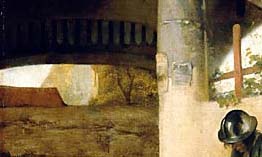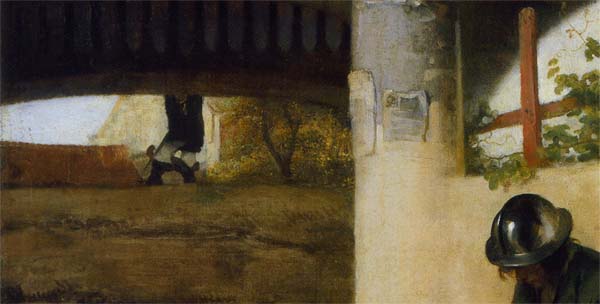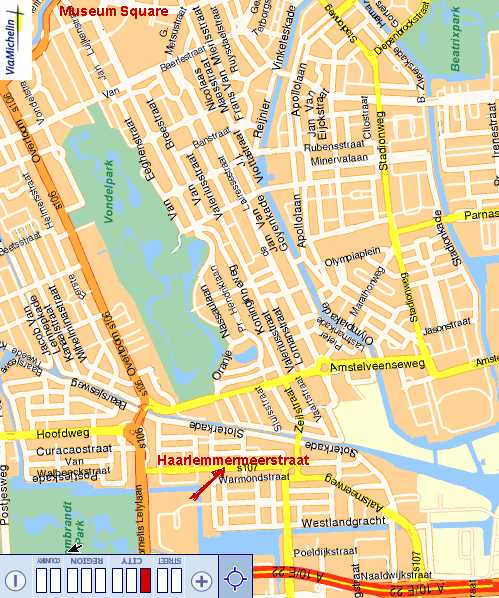 Book reviews by art historian Drs Kees Kaldenbach
Book reviews by art historian Drs Kees Kaldenbach Book reviews by art historian Drs Kees Kaldenbach
Book reviews by art historian Drs Kees Kaldenbach
Reviewed book : Frederik J. Duparc: Carel Fabritius 1622-1654. Published in 2004 by Waanders as a companion to the exhibition Carel Fabritius 1622-1654, de jonge meester (the young master) held in the Mauritshuis, The Hague (2004-2005) and in Staatliches Museum, Schwerin (2005).

(Above: Image of the Fabritius book cover)
 Museums directors are usually busy people, fully engaged in managing the unstoppable clockwork of keeping their museum going, overseeing all functions that make a museum a museum: board and policy meetings, staff and financial business meetings, collecting and lending art works, promoting art history research, doing some serious hobnobbing with private collectors and other museums to get loans of works of art - and last but not least - keeping the physical works of art it owns in top shape by properly presenting and restoring them.
Museums directors are usually busy people, fully engaged in managing the unstoppable clockwork of keeping their museum going, overseeing all functions that make a museum a museum: board and policy meetings, staff and financial business meetings, collecting and lending art works, promoting art history research, doing some serious hobnobbing with private collectors and other museums to get loans of works of art - and last but not least - keeping the physical works of art it owns in top shape by properly presenting and restoring them.
Only rarely do museum directors find time to sit down for a couple of months and perform the fine craft for which they were trained way back as an art history student: to dig like a burrowing animal into archives and literature, to come up with one or two intelligent ideas and writing a text about an artist and art works, and to prepare a beautiful and stunning temporary exhibition. Frederik J. Duparc, director of the Royal Collection of paintings, Mauritshuis, in The Hague has pulled off this feat by writing the catalogue Carel Fabritius 1622-1654 and mounting a fine exhibition in 2004-2005.
After Christopher Brown published his fine monograph on Fabritius in 1981 the common opinion at the time was that all that could possibly be said about Fabritius, his paintings and and his circle seemed to have been properly said. But then something stunning came up in 1985. An unknown, early, signed work by Fabritius was discovered that showed the art world that Fabritius started out his career as a history painter. Just like Johannes Vermeer, the Delft painter with whom he vied for representing a new kind of paintings that included new experiments in optics, perspective and thus presenting a level of reality and illusion that had never been experienced before. Thus there are numerous links between Fabritius (born 1622) and Vermeer (born 1632).
Fabritius was born in an artist family. Carel Fabritus' father was a painter in a village and so was his brother Barent Fabritius. Vermeer's father was an art dealer and member of the Delft Guild of St Luke. Vermeer chose to start his career with a series of history paintings.
History painting was regarded in The Netherlands and abroad as the ultimate summit a painter could aspire to. History painting, focusing on the foundations of human civilisation, looked back on stories from Greece, Rome, early history and the bible. To painters that historical and biblical subject matter was considered lofty, honorable, and far eclipsed the humdrum everyday work of producing landscapes, portraits, scenes of daily life and other such specialties. Dutch painters produced goods that were sold on the open market and were seen as long term investments, and producing for the upper strata of society with an interest in historical subject matter, this narrowed the marker a bit. The archive reseacher John Michael Montias has published inventory studies that show that the public taste veered away in the 17th century from history paintings to more marketable items like landscapes, interiors, portraits, scenes of daily life and the like.
The exhibition catalogue presents more wonderful new finds. The Goldfinch has been nicely restored, shedding its yellow varnish and it is now radiating as if it is backlit slide, underlining the kinship with some Vermeer paintings - notably the View of Delft in the Mauritshuis that also seems backlit and full of radiating light. Technical research of The Goldfinch has shown it once had a wooden frame around it connected by 10 metal nails. It may have been part of a peep box.
In this catalogue and in the exhibition the most surprising and stunning revelation is a restoration of the painting 'The Sentry' (die Wache) in the Staatliches Museum, Schwerin.

The Sentry, before restoration.

Above: Detail of The Sentry, 1654, before restoration.

Detail after restoration.
This detail of the original painting has been covered up by another painter after Fabritius finished it, perhaps to try and improve the logic of the composition or to make it more marketable. The revealed detail shows the legs and boots of another soldier who walks from left to right on top of a city wall. We notice the wide flaps of his boots and the sharp blade of the halberd (?) just to the side of his boots. What makes this find so interesting is that it seems like a movie still from a well-made Hollywood movie in which the director of photography had visionary qualities. Nothing like this composition is known to me in seventeenth century Dutch painting. Fabritius juxtaposes both movement and stillness, dereliction of duty and full alertness of two soldiers within one painting.
The quality of the color printing in this book is outstanding, as can be seen from the illustrations on this page.
= = = = = = = Frederik J. Duparc: Carel Fabritius 1622-1654. Published in 2004 by Waanders. Size 160 pages with over 100 illustrations, most large and in color. ISBN 90 400 8987 6 (hard bound). . = = = = =
See also another Fabritius page. http://www.xs4all.nl/~kalden/dart/d-a-fabrit.htm

Adriaen Coorte, by Quentin Buvelot, book & exhibition catalogue.
De Grote Rembrandt, door Gary Schwartz, boek.
Geschiedenis van Alkmaar, boek.
Carel Fabritius, Tentoonstellingscatalogus.
Frans van Mieris, Tentoonstellingscatalogus.
From Rembrandt to Vermeer, Grove Art catalogue, book.
Vermeer Studies, Congresbundel.
C. Willemijn Fock: Het Nederlandse interieur in beeld, boek.
Het Huwelijksgeschenk (1934), boek over de egoïstische vrouw, die haar luiheid botviert.
Zandvliet, 250 De Rijksten van de Gouden Eeuw , boek + nieuwe stippenplattegrond!
Ik doe wat ik doe, teksten van Lennaert Nijgh , boek + cd
Het Rotterdam Boek, boek.
Bouwen in Nederland 600 - 2000, boek.
Hollandse Stadsgezichten/ Dutch Cityscape, exhib. cat.
Zee van Land / over Hollandse Polders (NL) boek
Sea of Land / about Dutch Polders (English) book
A full article on the large portrait of the marvellous preacher Uytenboogaard.
Artikel over Uytenboogaerd, Nederlandse versie.
Geert Grote en het religieuze Andachtsbild
TEFAF 2008 art fair
A particularly unflattering image o fthe author. About Art Historian Drs. Kees Kaldenbach: Read a biography.
How to find Drs Kaldenbach:
Map of Haarlemmermeerstraat, Amsterdam. Please note this tricky situation: there is another street in town that sounds almost the same: Haarlemmerstraat. You need however to find my street, Haarlemmermeerstraat. Take tram 2 to Hoofddorpplein square or tram 1 to Suriname plein square.

Contact information:
Drs. Kees Kaldenbach , kalden@xs4all.nl
Haarlemmermeerstraat 83 hs
1058 JS Amsterdam
The Netherlands
telephone 020 - 669 8119
(from abroad NL +20 - 669 8119)
cell phone 06 - 2868 9775
(from abroad NL +6 - 2868 9775)
How to get there (after your booking confirmation!):
- by car: ring road exit S 106 towards the centre, then 1st to the right (paid parking)
- by trams 1 and 17; exit at Surinameplein
- by tram 2; exit Hoofddorpplein.
From the museum square it takes about a 10-minute tram ride.
Read client testimonials. Read a biography.
Photo by Dick Martin.
Reaction, questions? Read client testimonials.
Drs. Kees Kaldenbach, art historian, kalden@xs4all.nl Haarlemmermeerstraat 83hs, 1058 JS Amsterdam (near Surinameplein, ring road exit s106, streetcar tram 1 and 17).
Telephone 020 669 8119; cell phone 06 - 2868 9775.
Open seven days a week.
Amsterdam Chamber of Commerce (Kamer van Koophandel) number of Johannesvermeer.info / Lichaam & Ziel [ Body & Soul] is 3419 6612.
E mail esponses and bookings to art historian Drs. Kees Kaldenbach.
This page forms part of the 2000+ item Vermeer web site at www.xs4all.nl/~kalden
Launched March 25, 2007. Updated June 9, 2016.
2013: BBC shoot in Rijksmuseum, Amsterdam.
BBC 4 TV programme shoot in the Rijksmuseum, Amsterdam, March 28, 2013 just before the formal opening. Kaldenbach in red jacket. Behind the middle cameraman interviewer Andrew Graham-Dixon. The director approaching from the right.
In the middle: daughter Suzanne, who has not been there for 12 years, Kees Kaldenbach and interviewer Andrew Graham-Dixon.